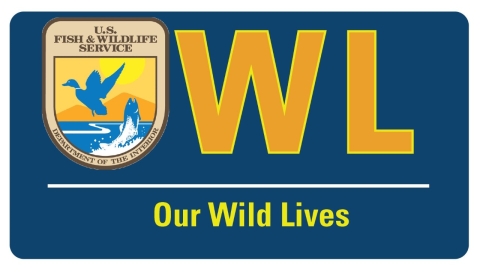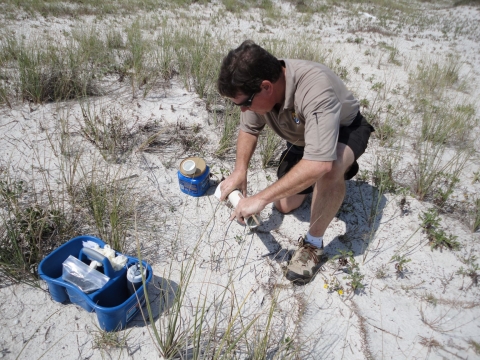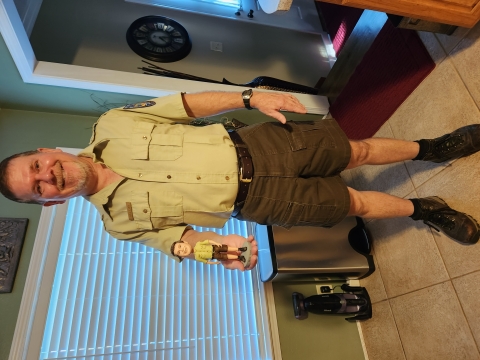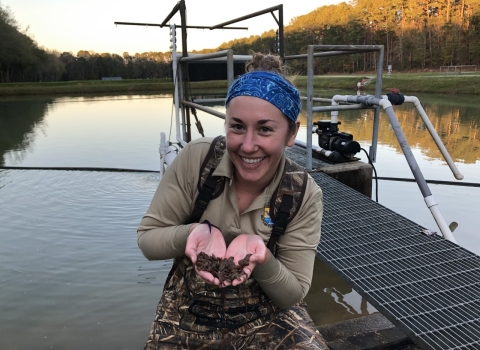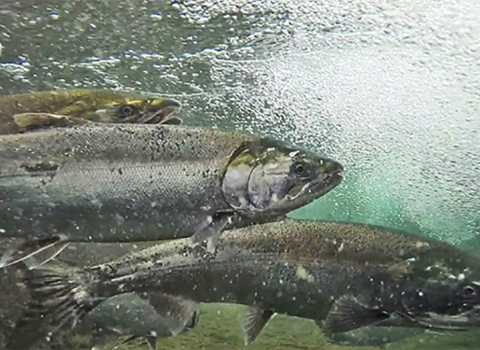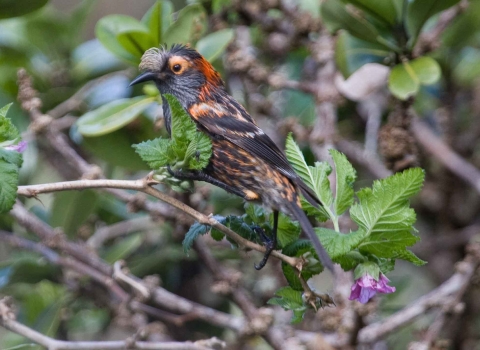Bill Lynn, now a wildlife biologist with the Alabama Ecological Services Office, was a student at the University of North Alabama and working as a cashier at a Texaco when he was guided toward a natural resources career.
“One day, a wildlife biologist with the Alabama Department of Conservation and Natural Resources came into the store. I explained to him what I wanted to do, and he offered me a summer job as a laborer at Lauderdale Wildlife Management Area in Waterloo, Alabama. The job was eye opening, and he guided me on how to become a wildlife biologist,” says Bill.
Bill’s first position with the Service was with the Panama City, Florida Ecological Services Field Office from 2000 to 2004, where he worked on recovery efforts for the Choctawhatchee beach mouse. From there, he worked for a timber company and several consulting firms before rejoining the Service at the Alabama Field Office in 2012. He serves as lead biologist for the Alabama beach mouse and assists in recovery efforts for the Perdido Key beach mouse, shorebirds, and sea turtles. Currently, he is helping to implement Alabama sea turtle friendly lighting plans.
As lead for the Alabama beach mouse, he spearheaded several accomplishments. A neglected No Name Road public beach access area was given the name Burgoyne Road after Alabama Ecological Services, Bon Secour National Wildlife Refuge, and their partners restored it. The Service’s partners in the successful project were Baldwin County, and the Alabama State Historical Commission. Prior to its restoration, the beach access had a dangerous crumbling roadbed with no public parking, with folks driving on either side of it, through sand dunes, impacting coastal habitat with folks parking near the primary dunes. Together, the government agencies removed the red clay, reduced the roadbed size to a 10-foot walking path to the beach, and installed a 25-space car parking area in the rear of the sand dunes for better storm survivability.
“The area where folks drove through the sand dunes was restored with clean beach sand and native sand dune plants were installed,” says Bill. “Now it naturally connects and protects Alabama beach mouse habitat, and it is a favorite spot for the public to access the beach within the park.”
Bill also led the implementation of the General Conservation Plan for Single and Duplex development in Alabama beach mouse habitat. The accomplishment reduced permitting timelines from about one to two years to one to three months. It also collects an in-lieu fee which helped the Service acquire 22 lots for conservation. Most of these lots are within the acquisition boundary of Bon Secour National Wildlife Refuge and the State of Alabama Department of Conservation Gulf Highlands Project.
“Also, the Deepwater Horizon event was a blessing in disguise. We have been lucky to acquire several large tracts of land which would not have been possible without this event,” says Bill.
Bill literally takes his work home with him. He and his wife Sandra own a 54-acre property in Washington County, Alabama that they are restoring. The property has a creek, pond, house, and a barn on it. The rest of the area is in timber.
“We are mainly restoring the property for wildlife and rare plants,” says Bill. “Prescribed burning has been reintroduced for the whole area which has helped tremendously. We have installed a butterfly garden, and in the wet areas, we are reintroducing pitcher plants and sundews.”
Bill proudly reports that he is probably the only wildlife biologist in the Service who has his own bobblehead. Sandra and his daughter Savannah created it using a photo they took of him. Savannah is working on her doctoral degree at the University of Virginia in Mechanical Engineering with an emphasis in Water Conservation.
For those interested in a natural resources career, Bill advises they join the Student Conservation Association, be persistent in your goals, and be willing to move around to advance your career. Good advice from someone who started as a laborer at a state wildlife management area wildlife management area
For practical purposes, a wildlife management area is synonymous with a national wildlife refuge or a game preserve. There are nine wildlife management areas and one game preserve in the National Wildlife Refuge System.
Learn more about wildlife management area and achieved his goal as a wildlife biologist.


